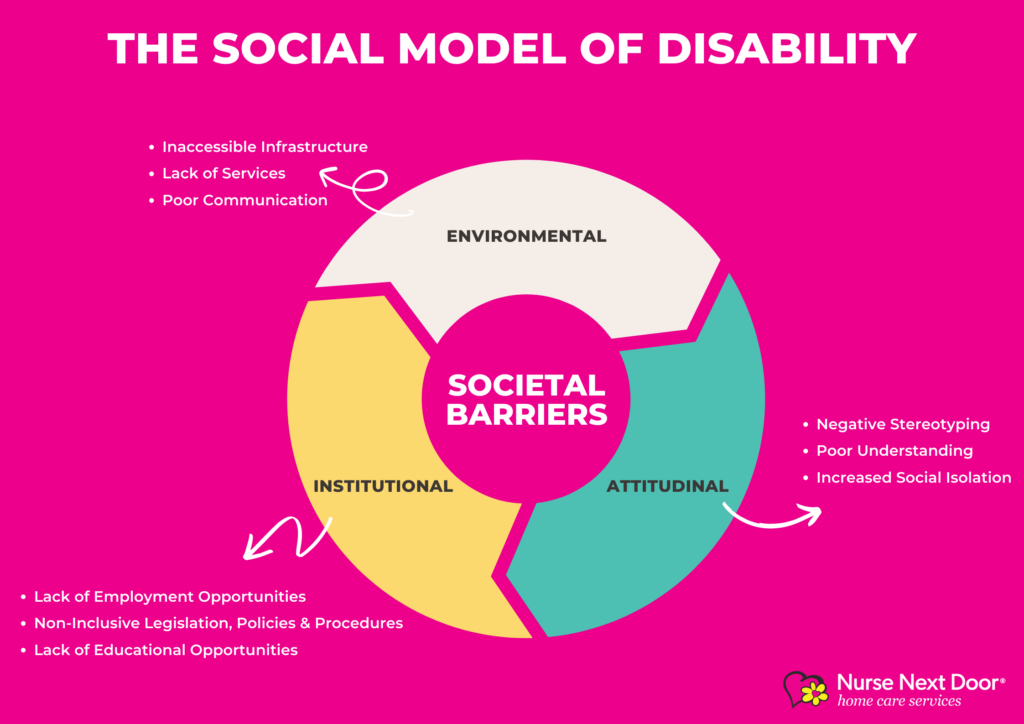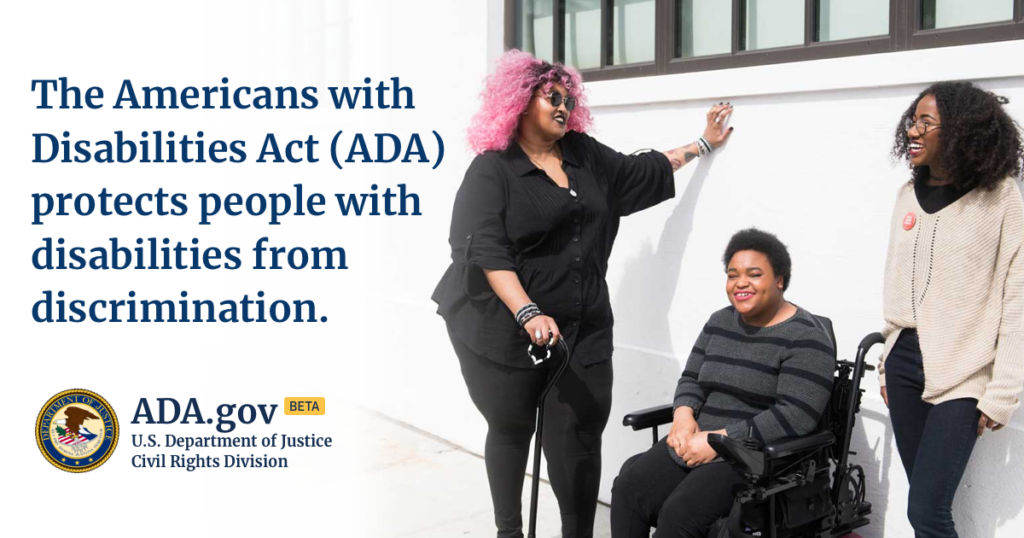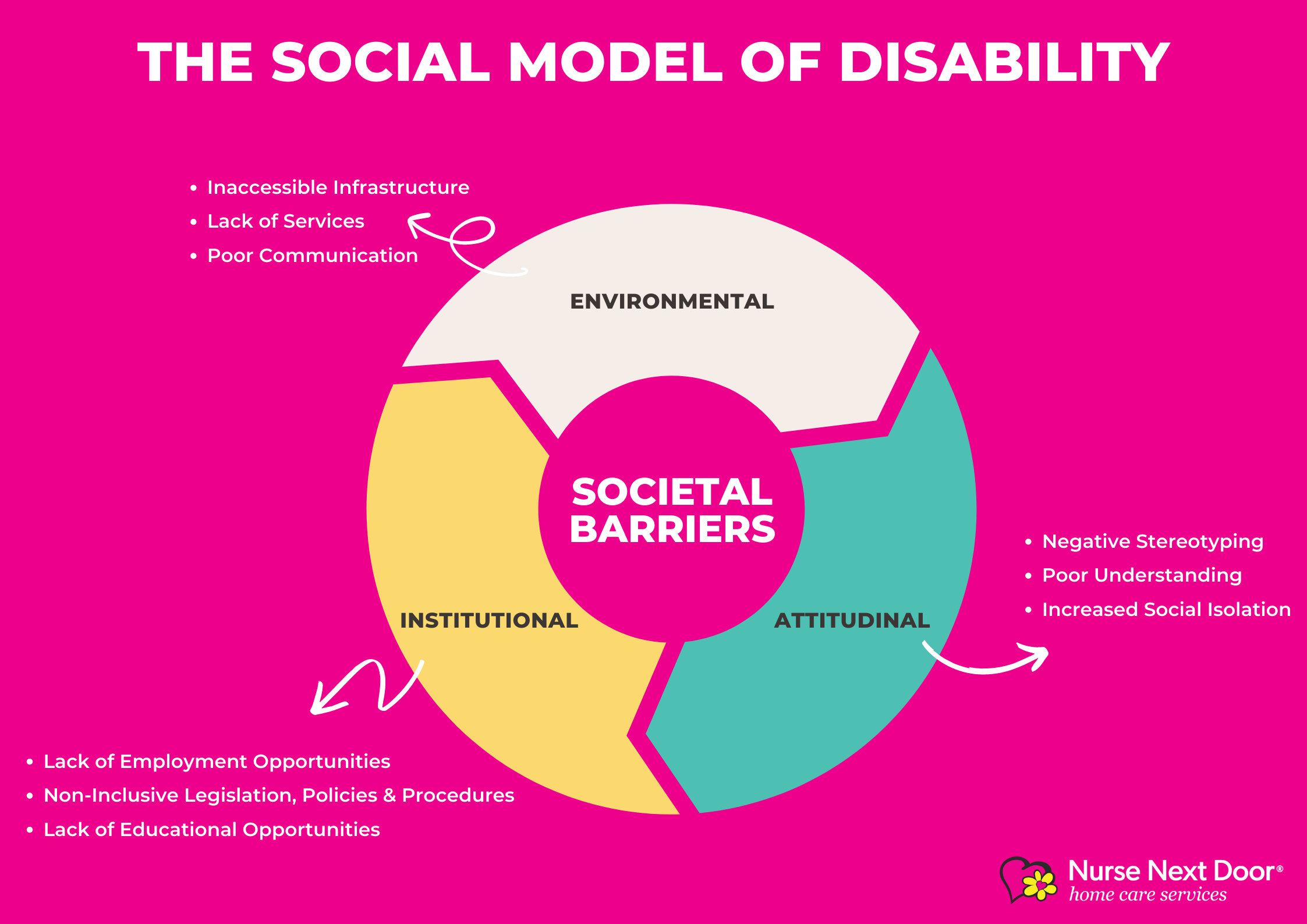In this blog post I will break down key concepts that I noticed and considerations related to the Accessible Environments for Persons with Disabilities portion of the textbook. I will be highlighting the importance of addressing societal barriers and promoting equal opportunities for individuals of all abilities.
Understanding Disability as a Social Construct
Drawing from the insights within the “Accessible Environments for Persons with Disabilities” chapter of our textbook, it’s shown that disability is increasingly perceived as a social construct rather than solely a medical condition. This perspective, often referred to as the social model of disability, emphasizes the role of societal barriers in limiting the participation of individuals with disabilities. Built environments, including infrastructure and public spaces, play a crucial role in either enabling or constraining the activities of people with disabilities. By recognizing disability as a product of environmental factors and social attitudes, we can work towards creating more inclusive and accessible environments for everyone.

Legislation and Advocacy
The chapter also discusses landmark legislation such as the Rehabilitation Act of 1973 and the Americans with Disabilities Act of 1990, which have significantly shaped the landscape of disability rights and accessibility. These laws, highlighted in our textbook, not only provide legal protections against discrimination but also mandate reasonable accommodations and accessibility standards in various domains. They represent the culmination of advocacy efforts by disability rights activists and organizations striving for equal opportunities and full participation for individuals with disabilities in society.
Here is so photos I found that can help understand the acts:


Universal Design
Universal design principles, as outlined in the “Accessible Environments for Persons with Disabilities” chapter, aim to create products and environments that are usable by people of all abilities and ages. This approach goes beyond mere accessibility by considering the diverse needs and preferences of users from the outset of the design process. By incorporating features such as wide doorways, ramps, and clear signage, universal design promotes inclusivity and enhances usability for everyone, regardless of their abilities.
Environmental Considerations
Practical design elements discussed in the textbook, such as accessible parking spaces, ramps, and inclusive signage, are essential for creating environments that accommodate individuals with disabilities. By removing physical barriers and enhancing navigability, these design features contribute to a more inclusive and welcoming built environment. Additionally, the chapter emphasizes the importance of considering the needs of individuals with sensory impairments, such as providing auditory signals and tactile indicators for wayfinding.
Changing Needs and Technology
As stated in the “Accessible Environments for Persons with Disabilities” chapter, technological advancements and evolving user needs shape the landscape of accessibility and inclusive design. Assistive technologies, ranging from mobility aids to communication devices, play a crucial role in enhancing accessibility and independence for individuals with disabilities. Furthermore, ongoing research and innovation drive improvements in design guidelines and standards, ensuring that built environments remain responsive to the diverse abilities and preferences of all individuals.
In conclusion, the exploration of accessible environments for persons with disabilities, as outlined in our textbook, helps us understand the impact of societal attitudes and environmental factors on the experiences of individuals with disabilities. By adopting a social model of disability, we acknowledge that disability is not merely a medical condition but a result of systemic barriers and exclusionary practices.
Mental and Learning Disabilities
In my discussion of accessibility, it’s crucial to recognize that the concept goes beyond physical accommodations. We must also consider the needs of individuals with mental and learning disabilities. This includes those who may struggle with decision-making due to various factors such as trauma, neurodivergence, or cognitive impairments.
For many people, navigating through spaces and making decisions can be overwhelming or even impossible without proper support. Simple tasks like finding a restroom or determining the best evacuation route can become very hard challenges. These challenges aren’t always visible but are just as significant as physical barriers.
Drawing from my experience working at a company called ResCare, I’ve had the opportunity of directly assisting clients who face challenges related to mental and learning disabilities on a daily basis. At Res Care, we understand the importance of addressing the unique needs of each individual we serve, especially when it comes to accessibility.
In my role as a DSP, I work closely with clients who struggle with decision-making due to various factors such as Cerebral Palsy , IDD, or cognitive impairments. Whether it’s assisting them in navigating their living environment, providing support during outings, or helping them develop strategies to overcome barriers, my goal is always to empower clients to live their lives to the fullest.

Comments
3 responses to “Breaking Barriers: Creating Inclusive Environments for Persons with Disabilities”
Rodric, great job breaking down the section about accessibility for disabled people. This kind of stuff gets me excited. One of the things I didn’t see much in the book or your blog that I think is important was discussion around mental and learning disabilities. I’m personally interested in potential changes to the built environment that can help people who struggle with decision making. Many people who have experienced extreme or prolonged trauma, who have been emotionally abused, who are on the neurodivergent spectrum, and who have mental impairments or cognitive diseases struggle to make decisions quickly-if at all. This can become a real safety issue when it comes to needing to evacuate an area, but it can also take a lot of time and energy that could be spent doing something more enjoyable or more urgent than deciding between something as “simple” as continuing down the hall in hopes there’s a bathroom and turning around to go to the one you know you saw back there. These kinds of considerations can be more complex than how wide to make an elevator door, but they’re also really important to think about.
Thank you for your comment Charles, I actually have a passion for this type of issue as well. I work in a company called Res Care and we care for people with disabilities. I think it is also important for me to address those issues on mental and learning disabilities. I will see if I can add what I know at the end of this blog post on mental and learning disabilities for people with disabilities. thank you for your input.
Hey Rodric, this was such an interesting and insightful blog, I really enjoyed it! I really like all of the videos you put in and I thought they added some good perspectives of people who go through life with different disabilities. The first was so interesting when she talked about how handicap versions of things in our world are actually used more than we would think and some of her ideas to make a better world for people with disabilities were super good and intriguing. I haven’t had anyone in my family have a disability so it is hard for me to understand how hard life must be for so many people but I think this weeks chapter and your blog really opened my eyes to the world being more inclusive and I am hoping I can try to apply it to my own life when the time comes. Overall a really great blog, thanks!